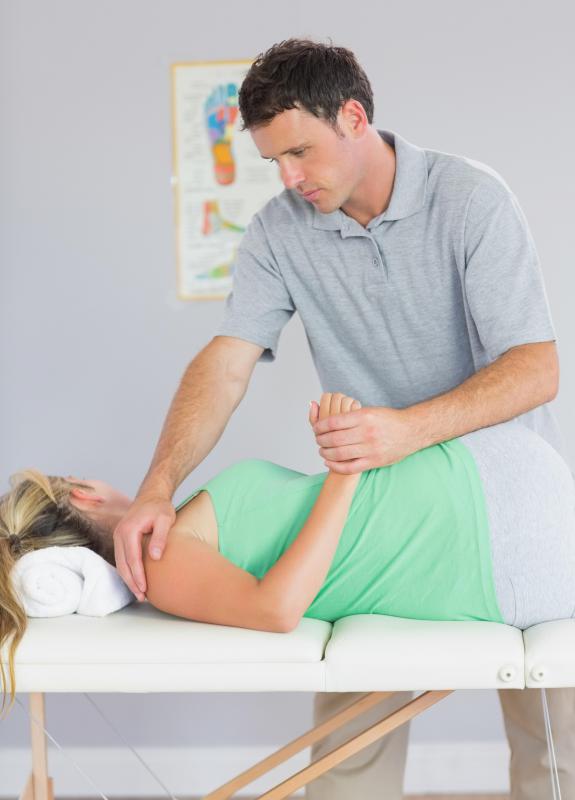At WiseGEEK, we're committed to delivering accurate, trustworthy information. Our expert-authored content is rigorously fact-checked and sourced from credible authorities. Discover how we uphold the highest standards in providing you with reliable knowledge.
What are the Most Common Spinal Stenosis Causes?
The most common spinal stenosis causes are the results of age-related conditions such as disk degeneration, osteoarthritis, and the thickening of ligaments. Stress or abnormal growths on the spine and bone disease are other typical causes. Heredity can also play a role. All of these problems reduce the amount of open space in the spinal canal and put pressure on the nerves.
Some spinal stenosis causes arise as the result of aging-related conditions. These include disk degeneration, osteoarthritis, and the thickening of ligaments. Disk degeneration happens when the cushioning between the vertebrae change shape in such a way that they expand and create bulges that put pressure on the spinal cord and nerve roots. Osteoarthritis causes bone spurs on the spine due to the deterioration of facet joints between vertebrae, also expanding into other areas of the spine. Over time, the thickening of the ligaments that connect the spinal bones can cause bulging which presses into the spine and nerves.

Other spinal stenosis causes come from impact directly on the spine. Injuries from major accidents such as car crashes and falls can pull the backbone out of alignment, thus putting pressure on the spinal cord. In many instances, the spinal canal and nerve endings are also affected by the impact.
Any sort of a growth on the spine can also be included in the list of spinal stenosis causes. Cancerous tumors that grow on the spine create pressure and reduce space in the spinal cord. Flurosis, a condition caused by excessive fluoride, can lead to calcification of spinal ligaments. There are also conditions where changes in the bones can cause abnormal growths or stiffness that put pressure on the spinal cord, such as ossification of the posterior longitudinal Ligament (OPLL) and diffuse idiopathic skeletal hyperostosis (DISH).

There are several diseases that can lead to the development of spinal stenosis. In Paget’s disease, the body grows bone tissue abnormally fast, resulting in oversized bones that can press into available space in the spinal canal. A form of arthritis in the spine called ankylosing spondylitis causes swelling that can expand into other areas of the spine.

In some instances, spinal stenosis causes are genetic. Achondroplasia is an inherited condition where the bone grows abnormally slow in the fetal stage, thus causing a narrow spinal canal and leading to dwarfism. There are also some children who are simply born with a narrower spine.
AS FEATURED ON:
AS FEATURED ON:













Discuss this Article
Post your comments